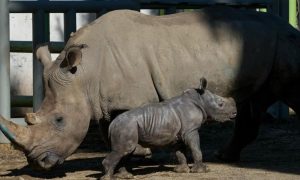Monitoring Desk
ISLAMABAD: Two-million-year-old Deoxyribonucleic Acid (DNA) from northern Greenland has revealed that what is now a cold and dry desert was once a land of warm and green coniferous forests, offering unprecedented insights into how climate change can shape ecosystems.
The breakthrough in ancient Deoxyribonucleic Acid analysis has revealed a Deoxyribonucleic Acid record 1mn years prior to a time when the Arctic region was 11 to 19 degrees Celsius warmer than the present day.
The findings reveal that the northern peninsula of Greenland, now a polar desert, was previously comprised of boreal forests of poplar and birch trees full of wildlife. The findings depict how species might adapt themselves, or be genetically modified, to survive rapid global heating.
Opening of a new chapter into history of DNA
Prof Eske Willerslev of the University of Cambridge and the University of Copenhagen, said: “A new chapter spanning 1mn extra years of history has finally been opened and for the first time we can look directly at the Deoxyribonucleic Acid of a past ecosystem that far back in time.”
Similar methods might be used to unveil new insights into the first humans and their ancestors, he added.
Scientists’ struggle to unveil 2mn old DNA data
Willerslev and colleagues worked for 16 years on the project to sequence and identify the DNA of 41 samples discovered from clay and quartz. Extracting and analysing the DNA required a lot of attention to detail and hardwork that involved piecing together tiny fragments of genetic material that first needed to be separated from clay and quartz sediment. The ancient Deoxyribonucleic Acid samples were found hidden deep in the Kap København Formation, an almost 100 metres thick sediment deposit that built up over 20,000 years. The deposit, placed in the mouth of a fjord in the Arctic Ocean in Greenland’s northernmost point had remained preserved and untouched in the permafrost for 2mn years.
The newly collected fragments are 1mn years older than the previous record for Deoxyribonucleic Acid sampled from the bone of a Siberian mammoth. No carnivores were revealed in the samples but the scientists are of the view that there may have been ancient bears, wolves or sabre-toothed tigers. “We don’t know what was there, but probably something that ate mastodons and reindeers,” said Willerslev.


























